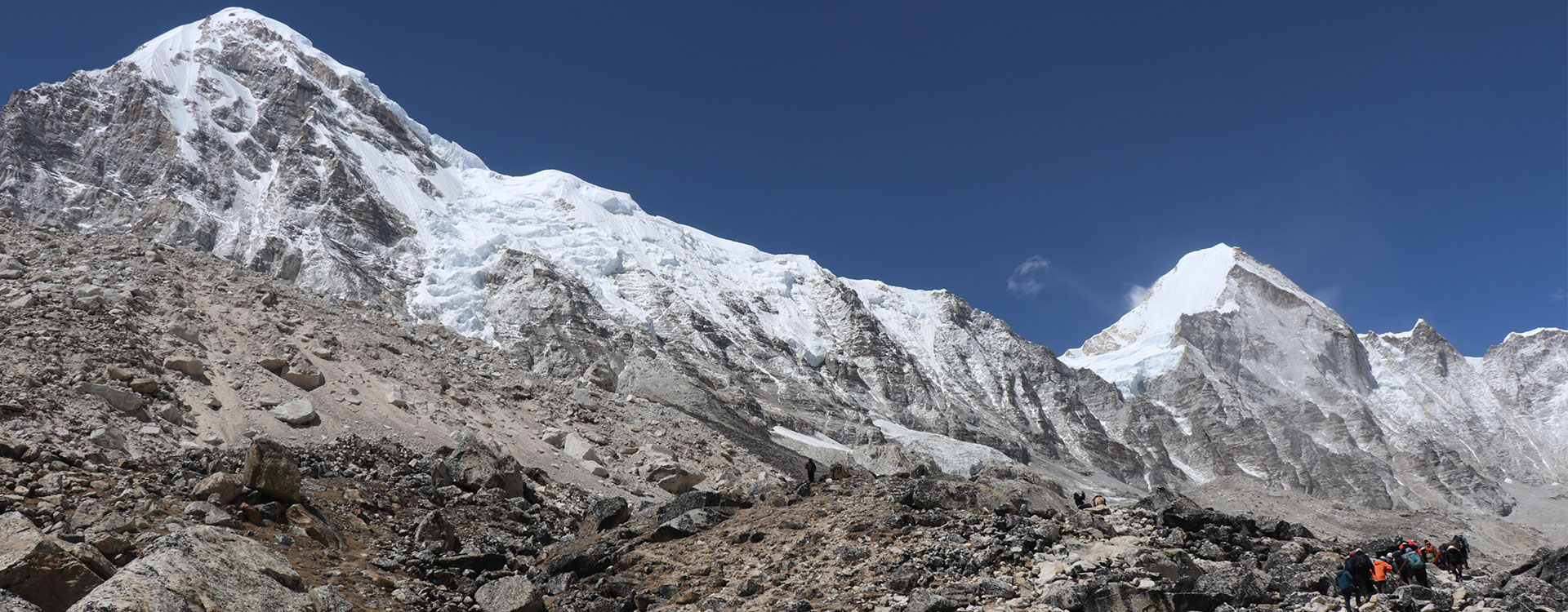Everest Base Camp Trek is the ultimate trekking dream for adventurers around the world. However, the high cost of the journey can even scare the most determined travelers. The flights, permits, teahouse accommodation, guide, porter and gear can add up to hundreds of dollars. So, this aspect of the journey makes many think that maybe this bucket-list adventure is only for those with deep pockets. However, the truth, it doesn’t have to be that way. With smart planning, local knowledge and a few practical strategies, you can experience this iconic journey in the Khumbu region in a budget-friendly way.
This guide will break down every aspect of the cheapest way to do Everest Base Camp Trek so you can have this once-in-a-lifetime experience in the most cost-effective way. From choosing the right season, negotiating teahouse rates, hiring local guides, to carrying essentials and knowing where not to cut corners, you will learn how to plan to a budget-friendly Everest Base Camp Trek. Of course, you can’t also compromise on safety, comfort and experience itself just to cut off some extra costs. So, if you are planning to trek independently, with a guide or with a small group, these tips and a sample budget will help you enjoy an adventure that is not just affordable but also unforgettable.
Budget-Friendly Trekking Options
Everest Base Camp can be expensive if you book the service without understanding the nature of the package. Managing the trek by yourself can also be expensive if you are not familiar with the ins and outs and the logistics structure. However, there are smarter ways to trek cheaply: you can go independent, hire local guides or porters directly, or join a group to share costs. Each of these approaches will balance cost, freedom and support differently. So, you will be able to choose an adventure that fits your budget and style.
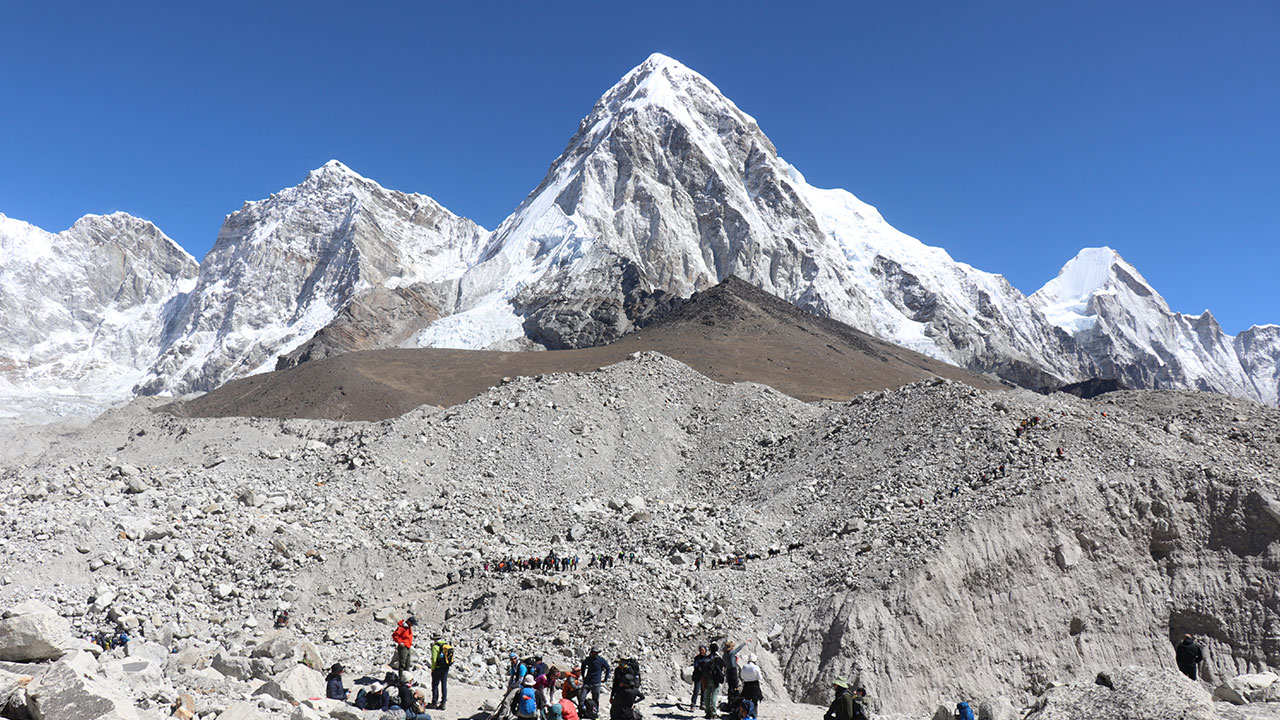
Trek Independently
If you decide to trek independently, then it means that are in full control of the journey. You fly into Lukla (or trek from Jiri if you really want to save on flights), carry your own bag and plan your itinerary for every day. However, there is a downside to this mode of trekking, there’s no agency to organize your permits, no guide to tell you which teahouse is safe or cheap and no porter to relieve your back of that heavy pack.
If you are wondering about the upisde? Then, you are spending the absolute minimum. You can only pay for essentials: the permits, flights, food, teahouses and maybe some gear if you don’t already have it. You can set your own pace, rest when you need and sleep where you want. However, if you get sick, confused about the trail or hit bad weather, you are completely on your own. You will have absolute freedom, but there are also risk factors. Only someone confident in high-altitude trekking, physically fit and okay carrying a heavy pack should consider this route.
Hire Local Guides or Porters Directly
This is the middle ground for the cheapest way to do Everest Base Camp Trek. Instead of paying an agency hundreds of extra dollars to arrange your trek, you can find guides and porters locally, usually in Kathmandu (for a guide) and Lukla (for a porter). You can negotiate directly to pay them daily and you can manage the cost properly for the support staff. A porter will carry your bag, sometimes help with food and water and make your trek physically easier.
As a guide, he will navigate, help with acclimatization and handle tricky arrangements in teahouses. It’s cheaper because you are cutting out the agency markup and in this way you are supporting the locals directly. Well, there is also a downside as you don’t know the nature of the people who you are hiring, you will have to trust your instincts, negotiate carefully,and be ready for last-minute changes. But the experience can also be richer; locals know the trails and villages better than anyone. And, they will can real stories you won’t get online.
Join a Group Trek
Joining a group will be like combing the independent and guided options. You pay less than hiring a private guide because the cost is shared among multiple trekkers and you often share porter and guide services as well. There is also safety in numbers and the logistics headache is reduced. In the group joining option, you will follow a set itinerary, sometimes arranged before you leave Kathmandu.
It also feels social and it can be surprisingly cheap if the group is budget-conscious. The trade-off is obvious: you will have to sacrifice freedom. You will need to hike at the group’s pace, eat what the group eats and sometimes sleep where the group sleeps. This can be limiting if you like to move at your own pace.
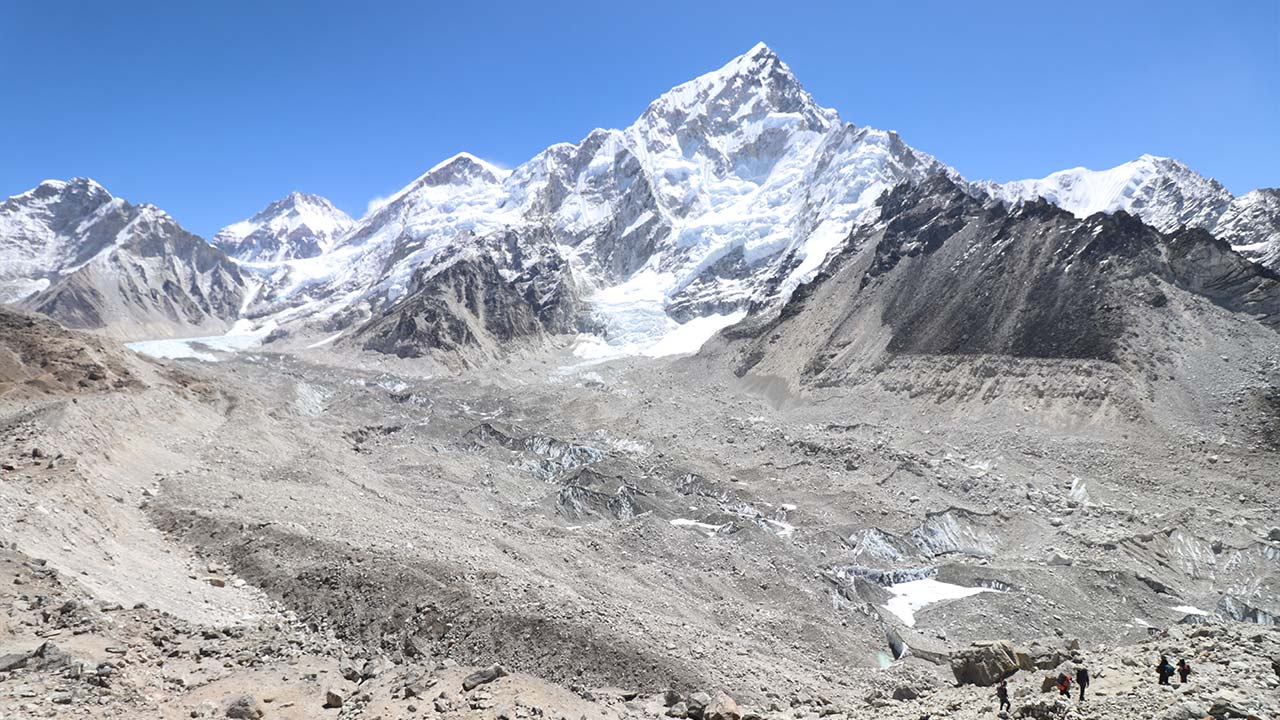
Cost Breakdown and How to Save
Trekking to Everest Base Camp involves several unavoidable costs such as permits, flights, accommodation, food, guides, and gear. However, there are plenty of ways to keep them under control. Understanding where your money goes and how to save on each segment of your trek is the key to making this adventure affordable without compromising safety or experience.
-
Permits
You can’t even step on the trail without collecting essential permits. There are two main ones: the Sagarmatha National Park (SNP) Permit and the Khumbu Rural Municipality Permit. The first one is around US$ 30, and the second, the municipality permit costs around US$ 15 to 20. You can collect these permits in Kathmandu or in Lukla if you’re doing the trek independently. The cheapest way to obtain these permits is to pay for them by yourself, fill out the forms and then collect them. There are no shortcuts but the process is simple.
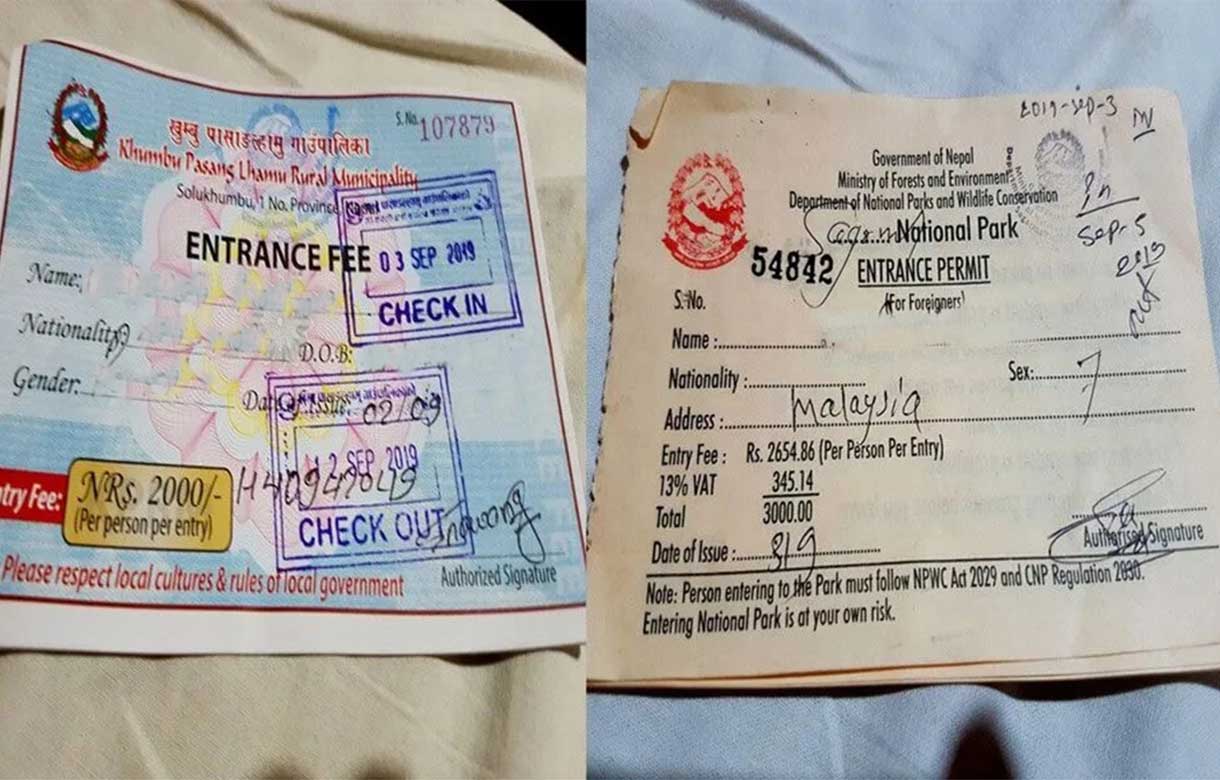
-
Flights vs. Overland Options
This is where people lose the most money if they don’t plan properly. A one-way flight from Kathmandu to Lukla costs US$ 150 to 200, sometimes more in peak season. Round-trip can easily hit the double of the margin. That’s a lot for a budget trek. The alternative is overland: you can drive or take a bus to Jiri or Salleri and trek to Lukla from there. Although this approach adds extra days to your journey, you will be able to save hundreds of dollars. It’s slower, tougher, and requires extra planning, but for someone trying to trek in a budget-friendly, it might be worth it.
-
Accommodation
along the trail is basic but manageable for a budget traveler. Teahouses usually charge US$ 5 to 15 per night depending on altitude. Higher up, it’s naturally more expensive. A good trick: many lodges include a room if you buy meals from them. That way, the cost of food covers your stay. In the off-season, you can negotiate prices even more—sometimes lodges will drop a few dollars per night just to get a guest in, because business is slow.
-
Food and Drinks
At lower elevations, meals cost US$ 3 to 5, but as you go higher, especially above Namche or Tengboche, a simple meal can hit US$ 7 to 10. Bottled water gets expensive fast, too. Budget tip: bring a stash of snacks from Kathmandu nuts, chocolate, energy bars. For water, don’t buy bottles constantly; carry a water purification tablet or filter. You save cash and avoid all that plastic.
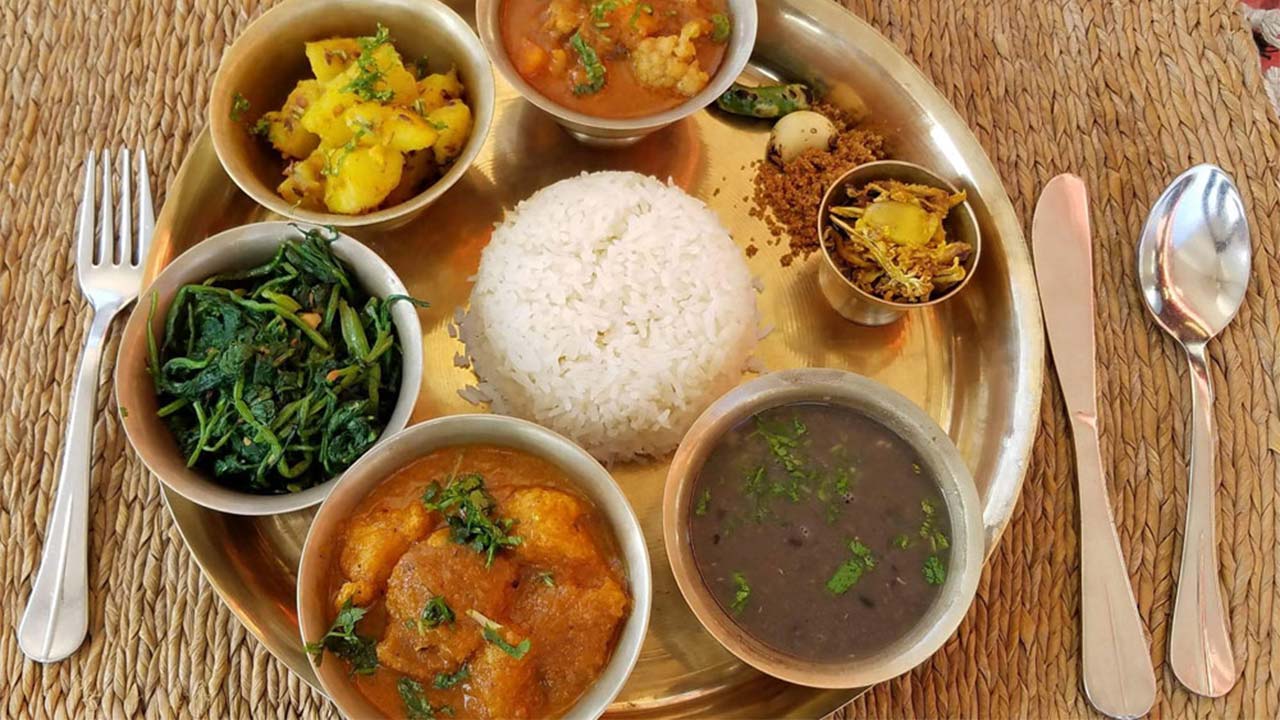
-
Guides and Porters
If you hire them independently instead of through an agency, you pay local rates: a porter costs about US$ 15 to 25 per day, a guide US$ 30 to 35 per day. The trick is to hire on the spot in Lukla or Namche and negotiate based on days needed. Some people hire a porter only for the hardest stretch, like Namche to Base Camp, instead of the whole trek. It’s cheaper and saves your back for the tough parts.
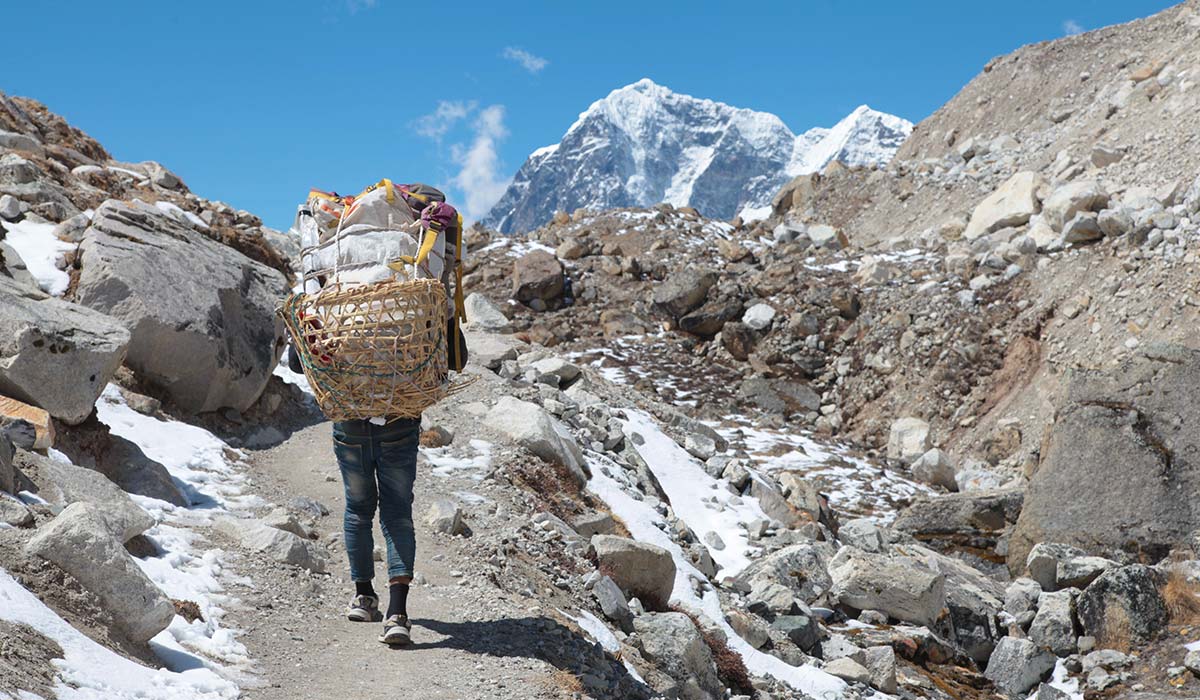
-
Gear and Equipment:
This is another big one. You don’t need to buy everything brand new at home. Kathmandu and Thamel have shops where you can rent gear down jackets, sleeping bags, trekking poles. And, renting is way cheaper than buying new. If you do buy, stick to local shops instead of imported brands; you get quality enough for the trek without the big price tag. Plan carefully, rent what you can, buy only the essentials and you won’t blow your budget before even leaving Kathmandu.
Best Time to Trek on a Budget
Trekking to Everest Base Camp in the off-season can save a surprising amount of money. Flights from Kathmandu to Lukla, which are already one of the most expensive parts of the trek, often cost less outside the busy spring and autumn periods. Teahouses along the trails are also quieter and owners are usually more willing to negotiate room rates or meal prices. This is especially useful if you are traveling solo or in a small group, as you can bring the cost down significantly compared to peak seasons.
Even small savings, like US$ 2 to 5 per night on accommodation, add up over 12 to 14 days and cheaper flights can save hundreds. Less crowded trails also make it easier to find good lodges without waiting or paying a premium for convenience. This will add comfort to your budget trek.
However, the off-season trek doesn’t come without risks. The monsoon season, from June to August, brings heavy rains, muddy and slippery trails. There is also a frequent flight delays or cancellations in Lukla. This can add unexpected costs if you need extra nights in Kathmandu or Lukla while waiting for flights. Likewise, the winter trekking, from December to February, is dry but extremely cold at higher altitudes.
Snow may cover trails, teahouses might offer limited services and heating in rooms is often minimal, forcing you to spend more on hot drinks or blankets to stay warm. You need to balance the savings with these potential challenges. So, being flexible with your schedule, prepared for weather changes, and mentally ready for the extra effort is key to making off-season trekking both safe and budget-friendly.
Extra Money-Saving Tips
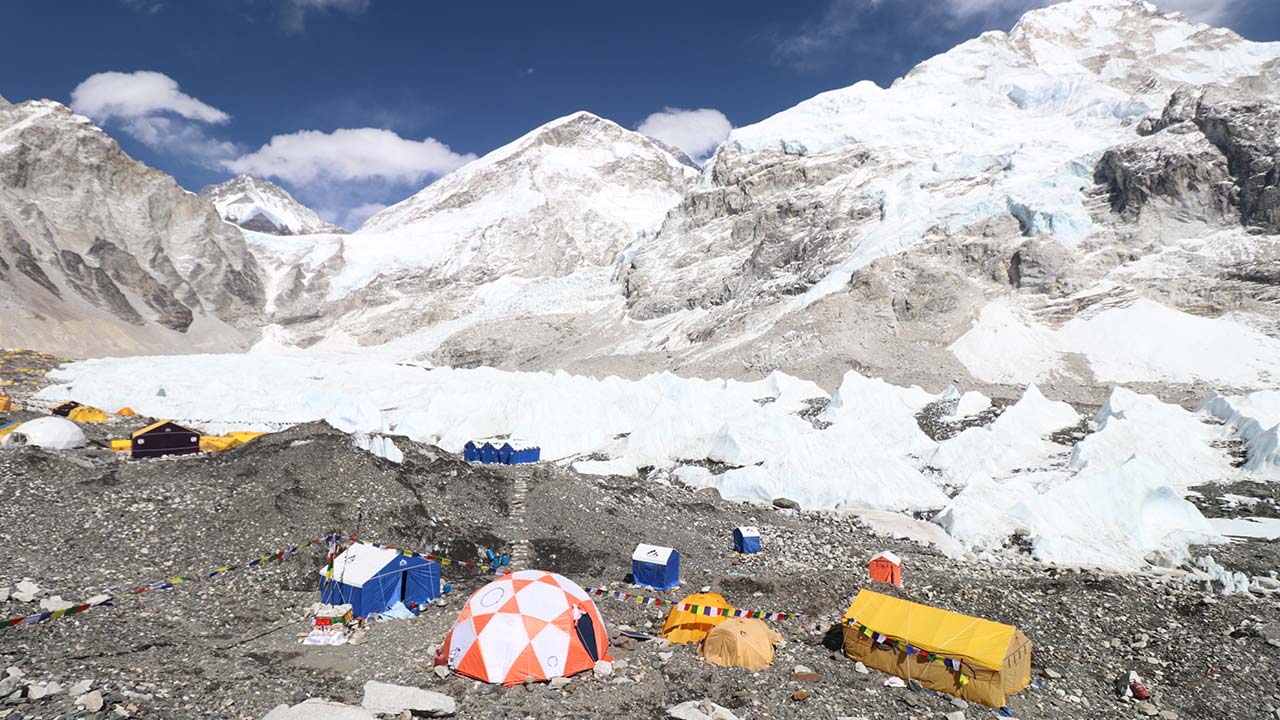
Saving money on the Everest Base Camp trek is all about planning, preparation and smart choices on the trail. Here are some practical ways to cut costs without compromising safety or experience:
-
Carry a reusable water bottle with a purifier or tablets
Water at teahouses can cost US$ 1 to 4 per liter but as you climb higher, the cost will climb too. Instead of buying bottled water constantly, bring a durable water bottle with a small purifier or purification tablets. You can refill safely from taps or streams, saving dozens of dollars over the trek while also reducing plastic waste.
-
Charge electronics with a solar power bank
Most teahouses charge US$3 to 5 per device each night and over 12 to 14 days, this adds up quickly. A solar power bank allows you to recharge phones, cameras, or GPS devices anywhere, this will eliminate these recurring fees and keeping your gadgets ready at all times.
-
Trek at a slow and steady pace to avoid altitude sickness
Rushing to Everest Base Camp can reduce the risk of altitude sickness, which can sometimes force you to use an expensive helicopter evacuation, which costs thousands of dollars. Taking your time to acclimatize properly, plan rest days and listen to your body will keep you healthy and prevent emergency expenses.
-
Negotiate room rates in lodges
During the off-season treks, many teahouses are willing to lower room rates due to the low number of travelers. But make sure to make the request politely. Even saving US$ 2 to 5 per night can accumulate into a large saving over the course of two weeks. There are also teahouses where opting for rooms includes meals, eating food where you are staying will reduce the total costs.
-
Hire local guides or porters directly
If you find trekking through an agency expensive, then you can book guides and porters directly by yourself, rather than going through an agency. This will reduce the middleman cost and you only pay for the days you actually need support. But make sure to check the review before hiring the guide
-
Bring snacks and small essentials from Kathmandu
You definitely need to bring snacks like energy bars, nuts and dry fruits for a quick energy boost along the way. So, if you stock your favorite snacks before the trek, you don't need to buy overpriced snacks on the mountain. There is also no guarantee that you will find your favourite brand on the remote stretches of the mountain.
-
Rent gear instead of buying
Buying quality trekking gear can be quite expensive and the cheap gear may not last throughout the trek. So, instead, you can go for the renting option. This way, you will be able to carry quality gear without spending hundreds of dollars on it. You can only buy what you absolutely need, like base layers and sturdy shoes. As for the rest, you can just rent them.
Cheapest Way to Do Everest Base Camp Trek: Sample Budget Estimation
If you are looking for a cheap way to do Everest Base Camp Trek, understanding the overall cost structure is essential. The cost for the trek varies significantly depending on whether you trek independently, hire a guide/porter, or go through an agency. Here is a realistic breakdown for each mode of trekking.
Independent Trekker
This is one of the ideal ways to plan a budget-friendly Everest Base Camp Trek. In this mode of trekking, you will handle the trek completely on your own. You will need to take care of flights, permits, accommodation, food and gear by yourself without relying on agencies. The standard cost range for accommodation along the trail is US$ 5 to 15 per night and food can cost US$ 3 to 10. Likewise, the permit costs around US$ 50 in total and miscellaneous expenses are around US$ 3 to 5 per day.
On average, as an independent trekker, you can expect to pay US$ 30 to 40 per day. Over the course of 12 to 14 days, you can expect the cost to come around US$ 420 to 560. In addition, the two-way flight from Kathmandu to Lukla route can add up to US$ 300 to 400. So, you can expect the total cost to be around US$ 720 to 960 for all logistics.
Budget Trek With Local Guide/Porter
Hiring a local guide and porter increases the comfort and safety factors of the trek. This can also be the cheapest way to do Everest Base Camp Trek if you hire them directly without going through an agency. Hiring a guide typically costs around US$ 30 to 35 per day and you can hire a porter at around US$ 15 to 25 per day. Although the guides can handle the permit needs, you will still need to pay around US$ 50 for the permits and let's keep the miscellaneous expenses around US$ 3 to 5 per day.
Now, let's add Kathmandu to Lukla two-way flight, which will be around US$ 300 to 400. Similarly, food is around US$ 3 to 10 per day and accommodation is around US$ 5 to 15 per night. For a trek up to 12 to 14 days, this cost adds up to US$ 1,000 to US$ 1,600. The overall price will come down to the length of the trip, what kind of accommodation you choose and from where you will hire guides and porters.
Trek With an Agency
Often, well-established agencies offer different modes of trekking options. For instance, you can do the Cheap Everest Base Camp Trek and Everest Base Camp Luxury Trek from the same agency. Even if you go for the cheap package for Everest Base Camp Trek from Eco Holidays Nepal, the package will cover for airport transfers, all necessary permits, Kathmandu to Lukla flights, comprehensive medical supplies, government taxes, etc. We will also provide trekking gear like sleeping bag, down jacket, duffel bag and walking poles (should be returned after trek).
This cheap Everest Base Camp Trek package costs US$ 820 per person. If you plan to go for a full coverage plan for 12 to 14 days, the cost margin can range from US$ 1,200 to 1,400. Before booking a package, you should check what coverage it offers in the includes section. This way, you will be able to select the best-value package and enjoy the adventure without going overboard on your budget limit.
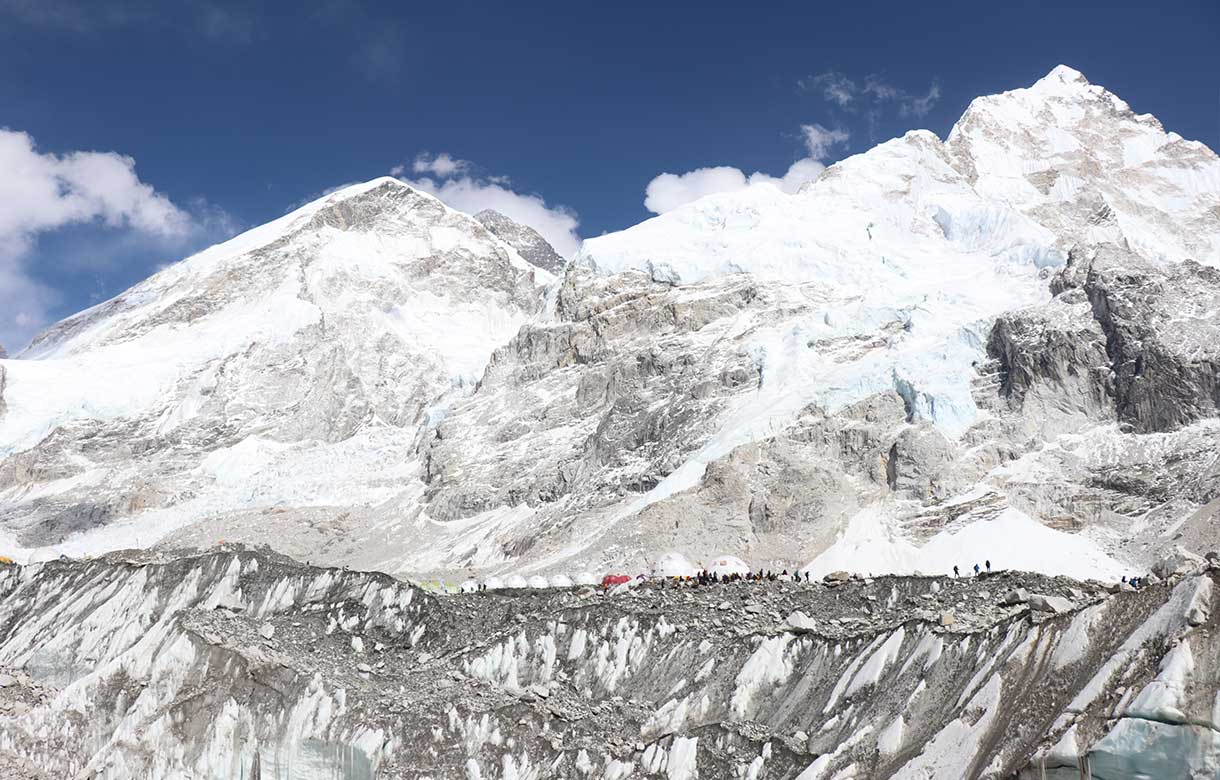
Things Not to Compromise On
It’s alright to look for the cheapest way to do Everest Base Camp Trek, however, while budgeting for the trip, there are some things that you shouldn’t compromise on. You need to be careful about these aspects when planning the budget friendly Everest Base Camp Trek, especially if you are doing an independent trek:
Health and Acclimatization: Even if you find the ultimate cheap way to do Everest Base Camp Trek, you should never skip the rest days or push yourself too hard to save time. Altitude sickness can become dangerous quickly. So, proper pacing and listening to your body are essential to stay safe.
- Travel Insurance: High-altitude trekking carries real risk as you will traverse the rugged and isolated stretches of the mountain. So even if you go for the cheapest way to do Everest Base Camp Trek, you need to get a proper insurance plan that covers for altitude sickness, emergency evacuation and medical support. Cutting off insurance to save money can be catastrophic.
- Sturdy Trekking Boots: Cheap or worn-out boots just won’t make the cut. You will need to invest in reliable and waterproof boots with ankle support. You will be walking for multiple hours during each day of the trek. So, if the boots are not of good quality and comfort, you will have to deal with blisters, pain and even injury.
- Warm Clothing and Sleeping Gear: During the EBC Trek, you will traverse across the alpine region which has sub-zero temperatures. So, down jackets, insulated layers and a good quality bag rated for sub-zero temperatures are essential for a safe and comfortable experience.
- Proper Nutrition: Skipping meals or just relying on cheap food can weaken your body during the trek. This will not only get you sick, but you will also be more susceptible to altitude sickness. So, healthy, nutritious and balanced for this physically demanding high-altitude journey is non-negotiable.
- Permits and Legal Requirements: For this trek, you will need to secure the Sagarmatha National Park Permit and the Khumbu Rural Municipality Permit. Trekking without permits is illegal and there are several checkpoints along the trekking route. In case if you are caught trekking without permit, you will be fine and may even get banned from the region.

